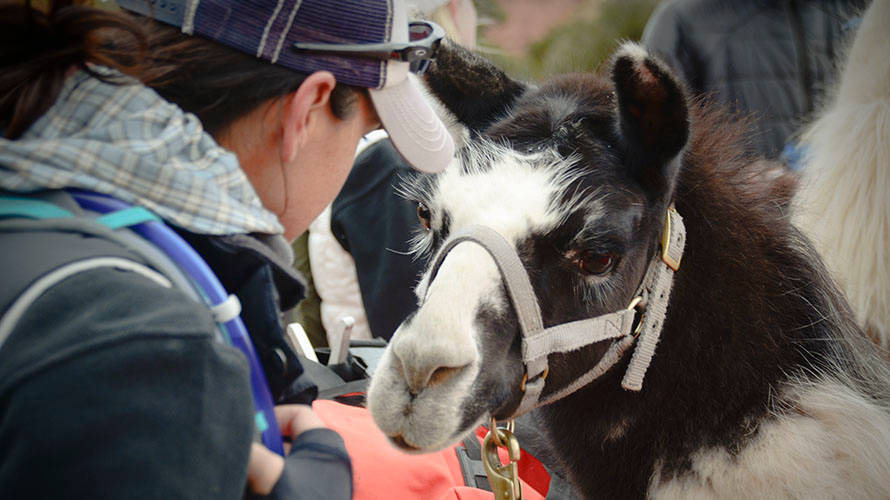
Llove at First Hike: Why You Should Walk With a Llama
The best hiking companions are low maintenance. They don’t reach their filthy hand into your bag of slightly melty trail mix without asking. They carry their pack without complaint and maintain a Goldilocks-like pace. Not too fast, not too slow. And they don’t babble incessantly on the trail or make unnecessary noise at that serene stopping point.
This applies to your crew of two-legged friends as much as those with four. Dogs and horses? They’re alright. But hiking with llamas? These hippie cousins of the camel make the best backpacking buddies. Ever.
Pack llamas can carry one-third of their body weight and still lay down 20 miles in a single day. No prob-llama. Humans, on the other hand, are supposed to load out at 15–20 percent of their body weight, but even that can strain your shoulders and cause back problems. Let the animal haul the bulk of your gear up those steep switchbacks so you don’t have to visit the chiropractor when you get home.
Leathery pads make llamas sure-footed and don’t dent the pristine landscape. They are allowed to boldly go where no hooved animal has gone before (or ever will). A llama’s digestive system is also more efficient than a horse’s, preventing the spread of unwanted weeds. The best part? Their shiz don’t stink.
Llamas don’t bark at every tree squeaking in the wind or chase after every bushy-tailed rodent that crosses their path. Once in a while, your silent brothers might hum in your ear as you casually lead them along the trail or give a flirtatious cluck to a nearby female. Each has its own personality. Kinda cute, right? But their tunes don’t get stuck in your head the way that annoying Justin Beiber song does. You know the one.
Even if you don’t have your own llama, you can still enjoy the benefits of hiking with these wide-eyed, wooly wanderers thanks to Wildland Trekking. One of just two concessionaires authorized to offer llama tours in Grand Staircase Escalante, the company’s experienced guides can take you to the national monument’s quietest corners as well as to other remote destinations in Southern Utah.
Its itineraries are perfect for families and groups with mixed abilities.
An easy out-and-back trip, the Golden Cathedral Llama Trek can be three or four days (10–16 miles) depending on what you choose to do. Camp on the shore of the Escalante River in relative solitude, see the light dramatically shining through Golden Cathedral’s domed sandstone and explore other remote destinations from a beautiful basecamp.
Some call it Shangri-llama →
Cover 23 miles of Canyon Country in four days on the Grand Staircase Llama Traverse. This thru-hike starts at the border of Capitol Reef National Park, crosses the Escalante River and ends at the historic Hole in the Rock Road after passing through peaceful canyons.
Llama say, “namaste” →
Spend four days amongst alpine lakes high on the Boulder Rim Llama Trek. This 24-mile loop in the mountains overlooking Capitol Reef National Park boasts cooler temps than found below.
Alpaca jacket and a camera →
In addition to providing a pack llama from its herd — the largest in North America — Wildland Trekking also supplies backcountry tents, temperature-appropriate sleeping bags, self-inflating sleeping pads and other necessary gear for your adventure. It would cost you close to $1,000 to outfit yourself with the same gear. Cha-ching. Gourmet eats (read: no dehydrated dinners) are also included in the cost. All you have to worry about is packing those red pajamas so you can take a selfie with your new best friend before falling to sleep under the dark, starry sky.